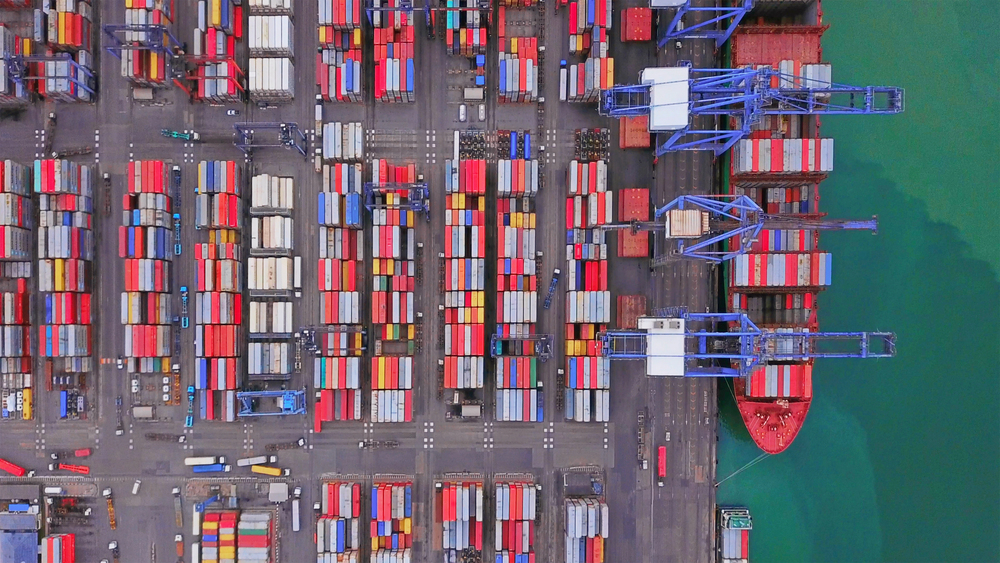Global Supply Chain Disruptions Make Business Interruption Insurance Crucial

By: Frank Sheridan
Today’s global economy has made the world more interconnected than ever—and with the benefits of sourcing globally, the COVID-19 pandemic has demonstrated the extensive impact of supply chain disruptions on a business.
This interconnectedness has led to an increased need for global insurance coverage as one of the means to protect against supply chain disruptions—specifically business interruption and contingent business interruption coverage.
However, addressing supply chain disruptions can be challenging. Insurers are increasingly finding that there is a ripple effect where one event can affect multiple customers and lead to high losses.
Disruptions Go Global
Evidence has shown that disruptions are more global than regional. In today’s world of sourcing globally, complex supply chains are designed to minimize production costs. However, there is a growing interdependency between many industries and processes, which means that multinationals are exposed to an increasing number of disruptive scenarios that could affect their business or operating models.
A disruption in one part of the world is rarely contained to that area. Rather, there is a chain reaction that can devastate business operations. The impact of a disturbance at the manufacturing end of the chain is almost immediate, but the subsequent impact flows rapidly down the supply chain to other companies and it can take years for affected companies to recover fully.
Insurance can protect many of the losses faced by business disruption, but dependence on insurance alone is an incomplete strategy. Multinational companies must therefore be sure their risk management strategies are strong enough to manage stakeholder interests after a business interruption. Robust business continuity plans will vastly improve supply chain resilience in the event of a breakdown and help protect a business from losing its customer base and reputation.
After the March 2011, earthquake and tsunami in Fukushima, Japan, many multinational companies learned painful lessons about the hidden weaknesses in their supply chains—weaknesses that resulted in a loss of revenue, and in some cases, loss of market capitalization. As many plants in Japan closed for several days with uncertainty on restart dates, there were worldwide ramifications.
Supply lines are longer and far more complex than in the past. Although multinationals could quickly assess the impacts that Fukushima had on their direct suppliers, they were blindsided by the impacts on their second- and third-tier suppliers operating in the affected region.
Knowledge of primary suppliers is regularly tracked. It’s the secondary layer of suppliers where the greater risk lies because it can catch companies by surprise. Supply chain managers know the risks of single sourcing and may regret their reliance on a single company for items they directly purchase. Often, they have limited options to choose from, and increasingly those options are only in China or other parts of Asia.
Why Business Interruption Coverage is Key
Corporate risk managers may believe that the right supply chain or contingent business interruption insurance coverage is unavailable, inadequate or cost-prohibitive. Nevertheless, in recent times, business interruption has become a necessary coverage rather than a “nice to have.”
Business interruption covers lost profits after a multinational’s own facility is damaged by a covered peril, while contingent business interruption insurance covers lost profits if an insured peril shuts down a critical supplier or a major customer. Contingent business interruption would also be triggered if the insured is still forced to slow or halt production—and therefore lose profits—because the supplier with damaged operations cannot deliver critical raw materials or parts.
Both generally only cover supply chain disruptions resulting from physical loss or damage to insured property. They do not cover events without physical losses, such as power outages or labor disruptions, and will not provide protection for loss of market share, for example, once customers have moved their business to a competitor.
Still, business interruption and contingent business interruption losses can account for 50%-70% of catastrophe losses. Because of this, insurers are beginning to put more focus on the underwriting of supply chain risks.
Further, policy language internationally has different terms, conditions and coverages than you typically would find in U.S.-issued policy language. This can lead to potential misunderstandings of policy coverage and create unrecognized gaps in coverage. This can have a detrimental effect on a business.
The structuring of an efficient, cost-effective global program requires a close understanding of the evolving regulatory environment. Multinational companies traditionally have focused on whether a local jurisdiction has compulsory coverages, but many multinational companies may be unaware of more global compliance requirements, as well as unanticipated tax, reputational and other financial repercussions.
Intensifying regulatory pressures make it progressively more difficult to insure global risks in a consistent and cost-effective manner. By upgrading their due diligence, multinational organizations will be able to assure compliance with two basic principles of insurance regulation: one, governing the transactional elements, which generally regulate insurer conduct; and two, governing the location of the risk, which generally regulate the conduct of the local subsidiary and local broker. Not appreciating both principles can result in consequences that are unexpected and costly.
Simplifying Multinational Exposure: Controlled Master Program
A controlled master program (CMP) can be an effective way to insure global exposures. Implementing a CMP brings consistency across multiple countries by combining local policies with a global master policy and harmonizes coverages, terms and conditions, and financial limits across a worldwide program. Local policies are compliant with local laws and regulations, written in the local language, provide access to networks of highly respected local insurers around the globe, and designed to effectively address customers’ local exposures.
Without a locally admitted policy, a subsidiary company may be left without coverage for certain losses. The CMP, which is purchased at the corporate level, supplements local admitted policies with differences in conditions or differences in coverage limits.
A CMP maximizes global insurance capacity and minimizes costs while maintaining centralized control over risk management and risk transfer practices. These programs eliminate the patchwork of international coverages that often leaves clients and agents open to coverage gaps, compliance issues or coverage that does not fit their needs.
With all the evolving complexities facing U.S. companies and supply chain disruptions, agents who partner with carriers that offer customizable and robust CMPs can help simplify the administration and process for themselves while providing a more comprehensive, compliant and cohesive experience for their clients with a total global solution.
Frank Sheridan is assistant vice president of international at The Hanover.










